AWS News Blog
AWS Certificate Manager Launches Private Certificate Authority
|
|
Today we’re launching a new feature for AWS Certificate Manager (ACM), Private Certificate Authority (CA). This new service allows ACM to act as a private subordinate CA. Previously, if a customer wanted to use private certificates, they needed specialized infrastructure and security expertise that could be expensive to maintain and operate. ACM Private CA builds on ACM’s existing certificate capabilities to help you easily and securely manage the lifecycle of your private certificates with pay as you go pricing. This enables developers to provision certificates in just a few simple API calls while administrators have a central CA management console and fine grained access control through granular IAM policies. ACM Private CA keys are stored securely in AWS managed hardware security modules (HSMs) that adhere to FIPS 140-2 Level 3 security standards. ACM Private CA automatically maintains certificate revocation lists (CRLs) in Amazon Simple Storage Service (Amazon S3) and lets administrators generate audit reports of certificate creation with the API or console. This service is packed full of features so let’s jump in and provision a CA.
Provisioning a Private Certificate Authority (CA)
First, I’ll navigate to the ACM console in my region and select the new Private CAs section in the sidebar. From there I’ll click Get Started to start the CA wizard. For now, I only have the option to provision a subordinate CA so we’ll select that and use my super secure desktop as the root CA and click Next. This isn’t what I would do in a production setting but it will work for testing out our private CA.
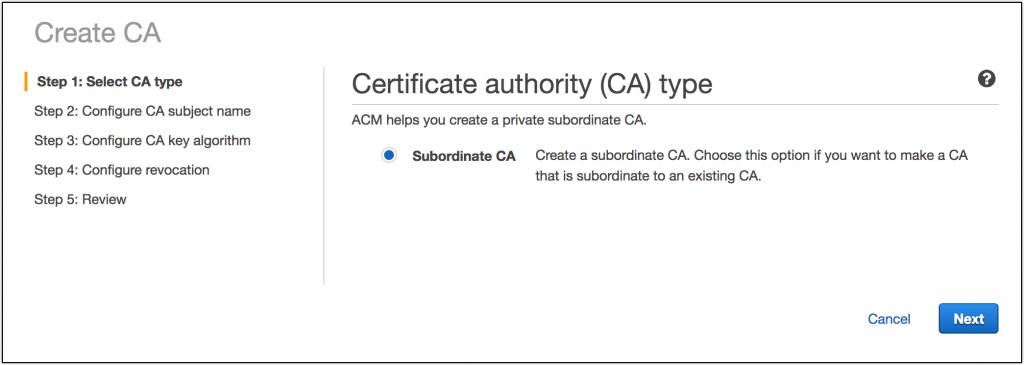
Now, I’ll configure the CA with some common details. The most important thing here is the Common Name which I’ll set as secure.internal to represent my internal domain.
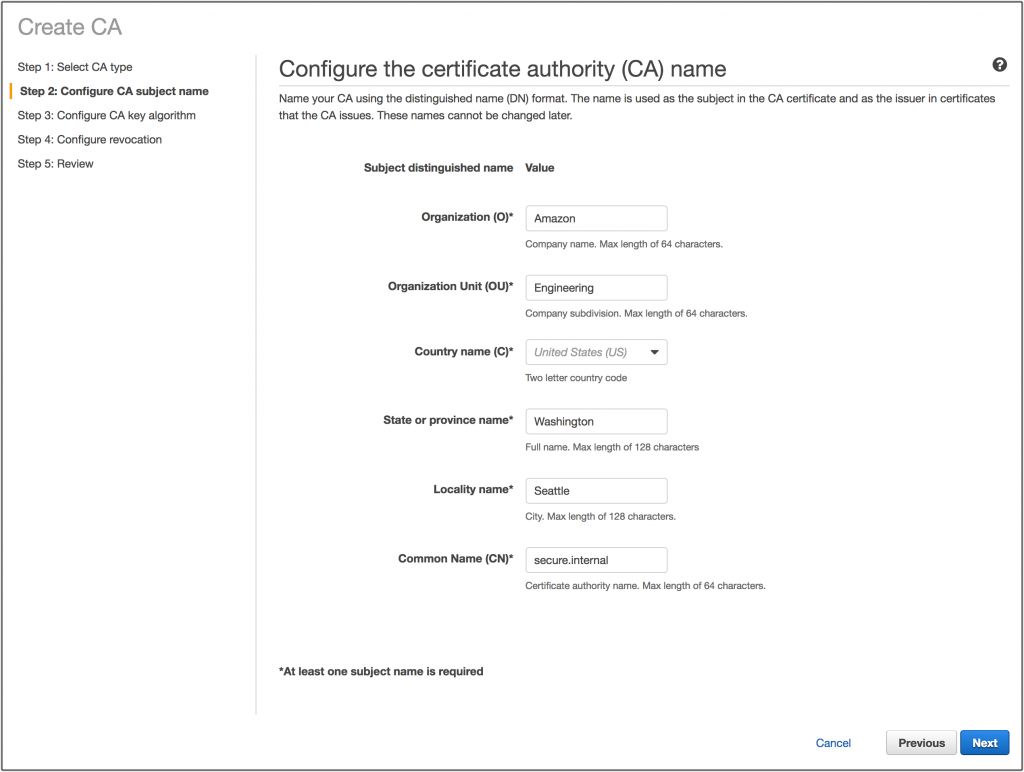
Now I need to choose my key algorithm. You should choose the best algorithm for your needs but know that ACM has a limitation today that it can only manage certificates that chain up to to RSA CAs. For now, I’ll go with RSA 2048 bit and click Next.
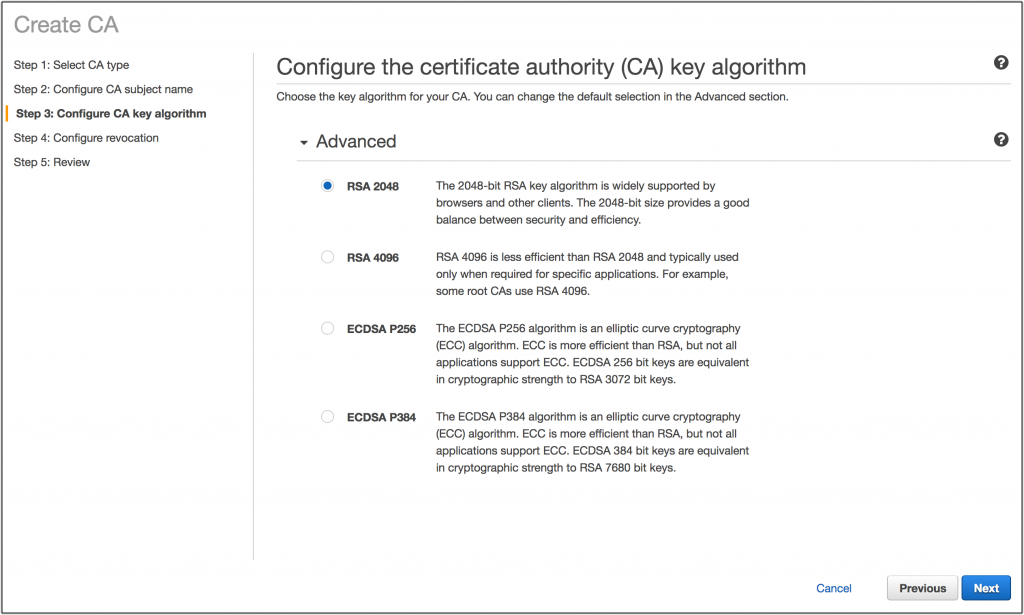
In this next screen, I’m able to configure my certificate revocation list (CRL). CRLs are essential for notifying clients in the case that a certificate has been compromised before certificate expiration. ACM will maintain the revocation list for me and I have the option of routing my S3 bucket to a custom domain. In this case I’ll create a new S3 bucket to store my CRL in and click Next.

Finally, I’ll review all the details to make sure I didn’t make any typos and click Confirm and create.
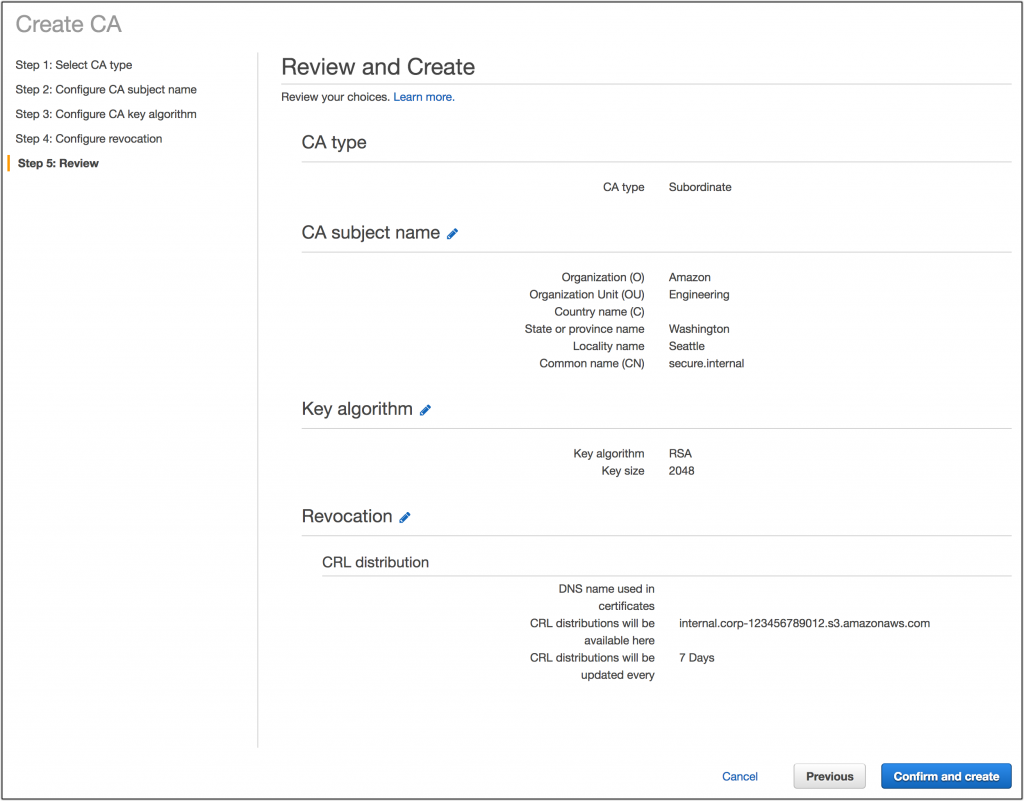
A few seconds later and I’m greeted with a fancy screen saying I successfully provisioned a certificate authority. Hooray! I’m not done yet though. I still need to activate my CA by creating a certificate signing request (CSR) and signing that with my root CA. I’ll click Get started to begin that process.

Now I’ll copy the CSR or download it to a server or desktop that has access to my root CA (or potentially another subordinate – so long as it chains to a trusted root for my clients).
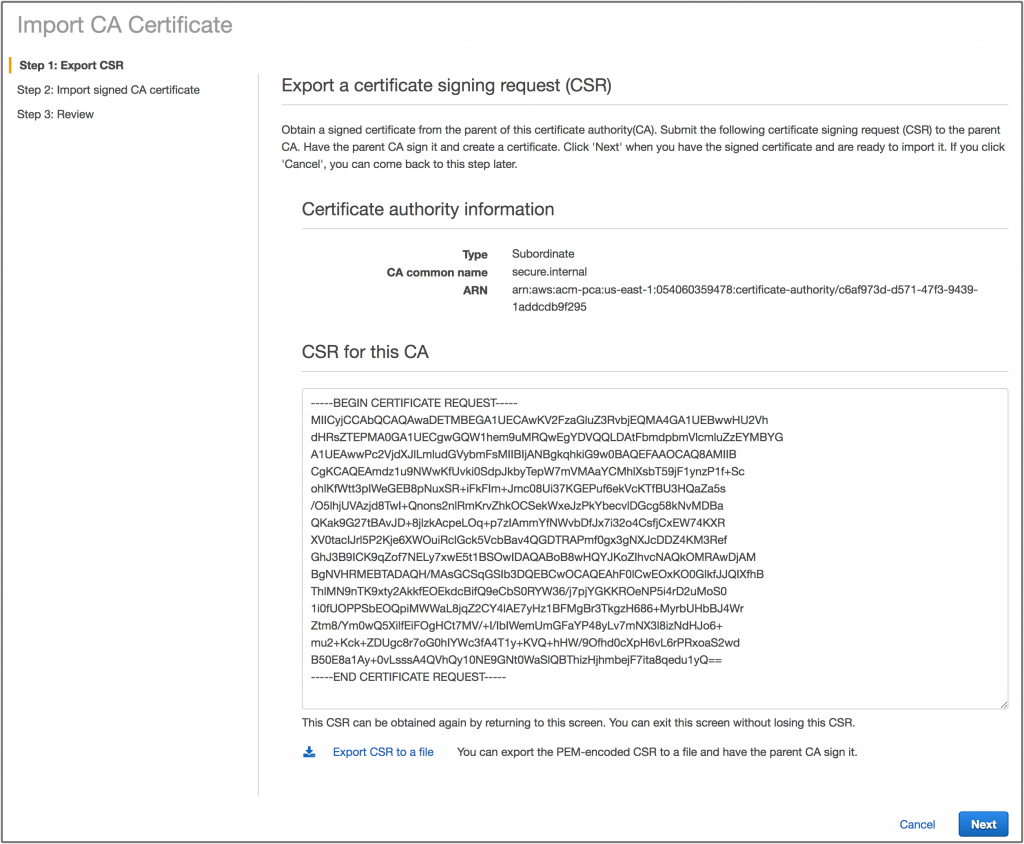
Now I can use a tool like openssl to sign my cert and generate the certificate chain.
$openssl ca -config openssl_root.cnf -extensions v3_intermediate_ca -days 3650 -notext -md sha256 -in csr/CSR.pem -out certs/subordinate_cert.pem
Using configuration from openssl_root.cnf
Enter pass phrase for /Users/randhunt/dev/amzn/ca/private/root_private_key.pem:
Check that the request matches the signature
Signature ok
The Subject's Distinguished Name is as follows
stateOrProvinceName :ASN.1 12:'Washington'
localityName :ASN.1 12:'Seattle'
organizationName :ASN.1 12:'Amazon'
organizationalUnitName:ASN.1 12:'Engineering'
commonName :ASN.1 12:'secure.internal'
Certificate is to be certified until Mar 31 06:05:30 2028 GMT (3650 days)
Sign the certificate? [y/n]:y
1 out of 1 certificate requests certified, commit? [y/n]y
Write out database with 1 new entries
Data Base Updated
After that I’ll copy my subordinate_cert.pem and certificate chain back into the console. and click Next.
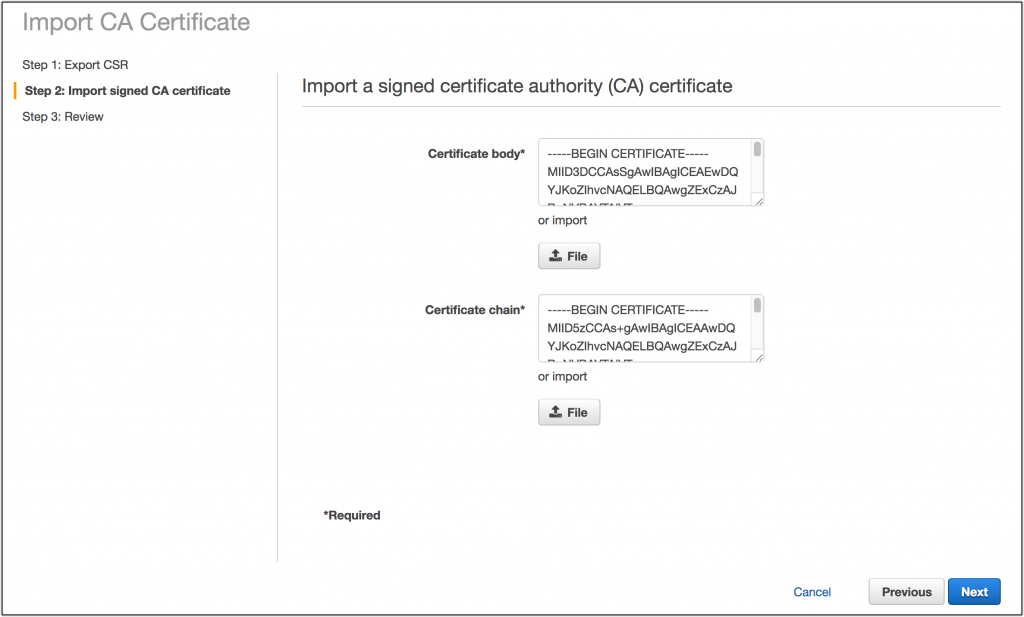
Finally, I’ll review all the information and click Confirm and import. I should see a screen like the one below that shows my CA has been activated successfully.

Now that I have a private CA we can provision private certificates by hopping back to the ACM console and creating a new certificate. After clicking create a new certificate I’ll select the radio button Request a private certificate then I’ll click Request a certificate.
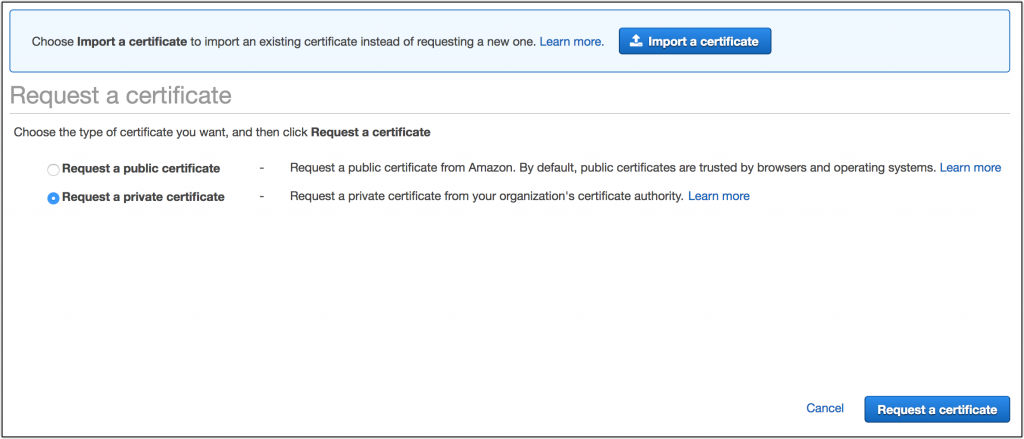
From there it’s just similar to provisioning a normal certificate in ACM.
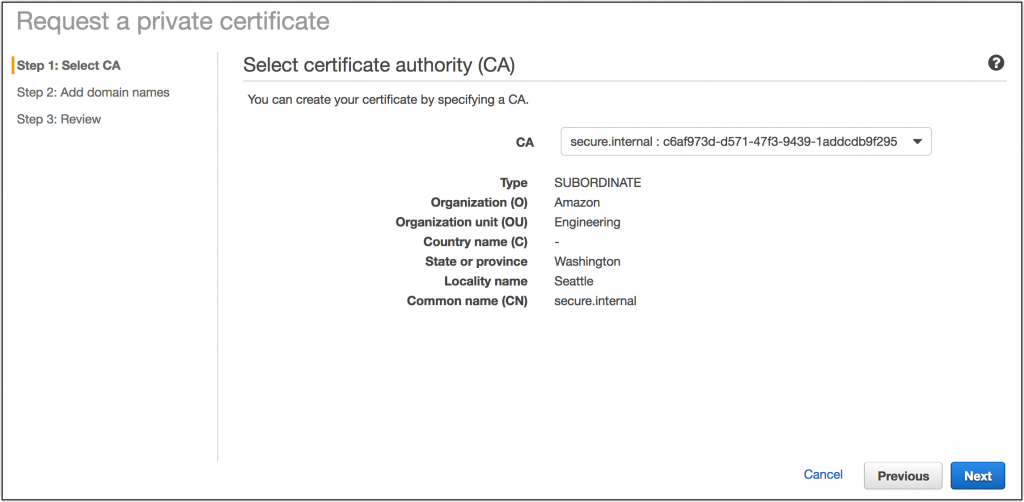
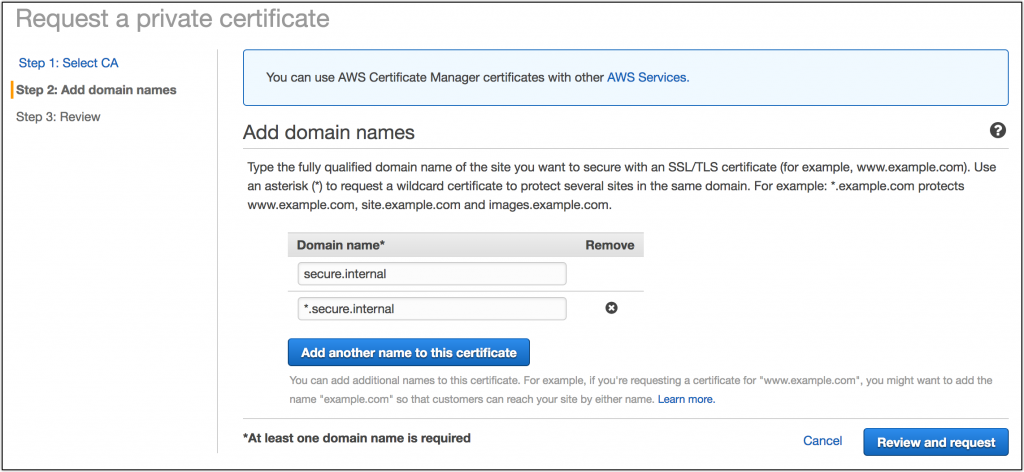

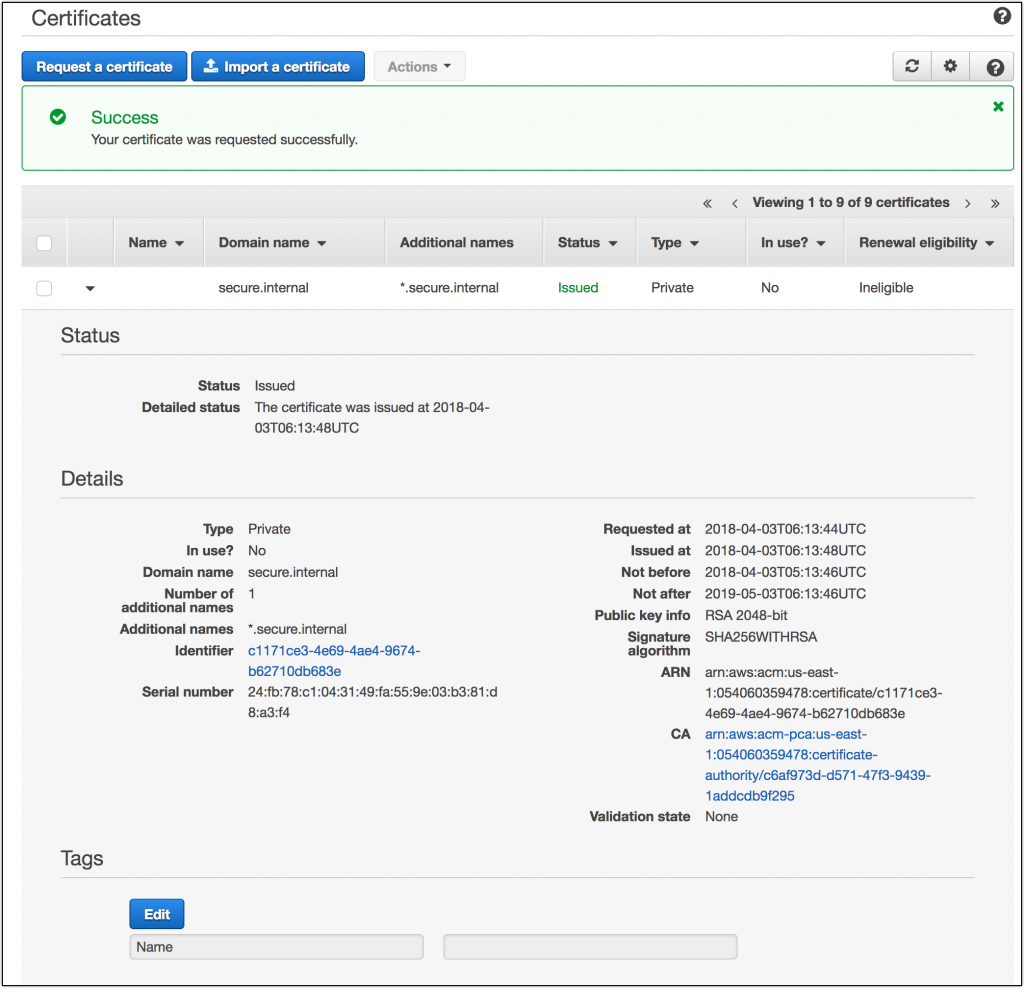
Now I have a private certificate that I can bind to my ELBs, CloudFront Distributions, API Gateways, and more. I can also export the certificate for use on embedded devices or outside of ACM managed environments.
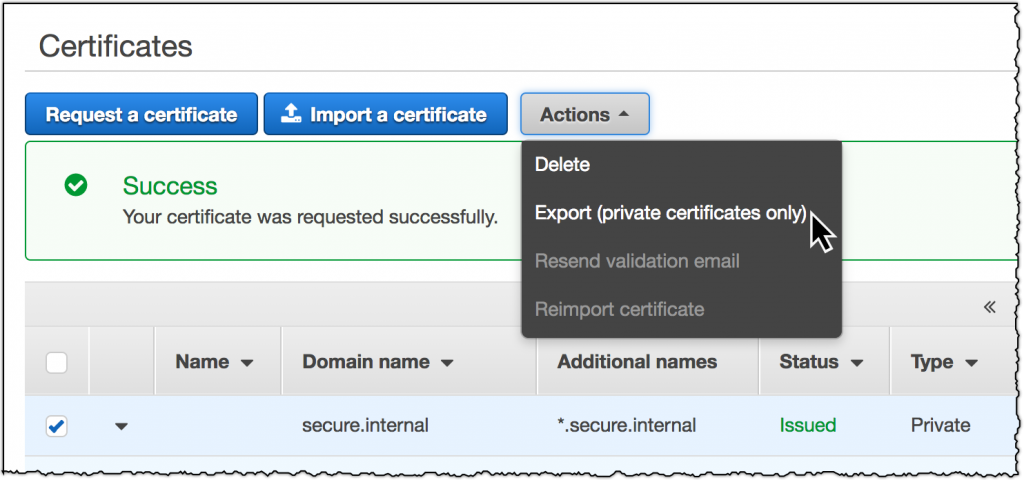
Available Now
ACM Private CA is a service in and of itself and it is packed full of features that won’t fit into a blog post. I strongly encourage the interested readers to go through the developer guide and familiarize themselves with certificate based security. ACM Private CA is available in in US East (N. Virginia), US East (Ohio), US West (Oregon), Asia Pacific (Singapore), Asia Pacific (Sydney), Asia Pacific (Tokyo), Canada (Central), EU (Frankfurt) and EU (Ireland). Private CAs cost $400 per month (prorated) for each private CA. You are not charged for certificates created and maintained in ACM but you are charged for certificates where you have access to the private key (exported or created outside of ACM). The pricing per certificate is tiered starting at $0.75 per certificate for the first 1000 certificates and going down to $0.001 per certificate after 10,000 certificates.
I’m excited to see administrators and developers take advantage of this new service. As always please let us know what you think of this service on Twitter or in the comments below.
– Randall
